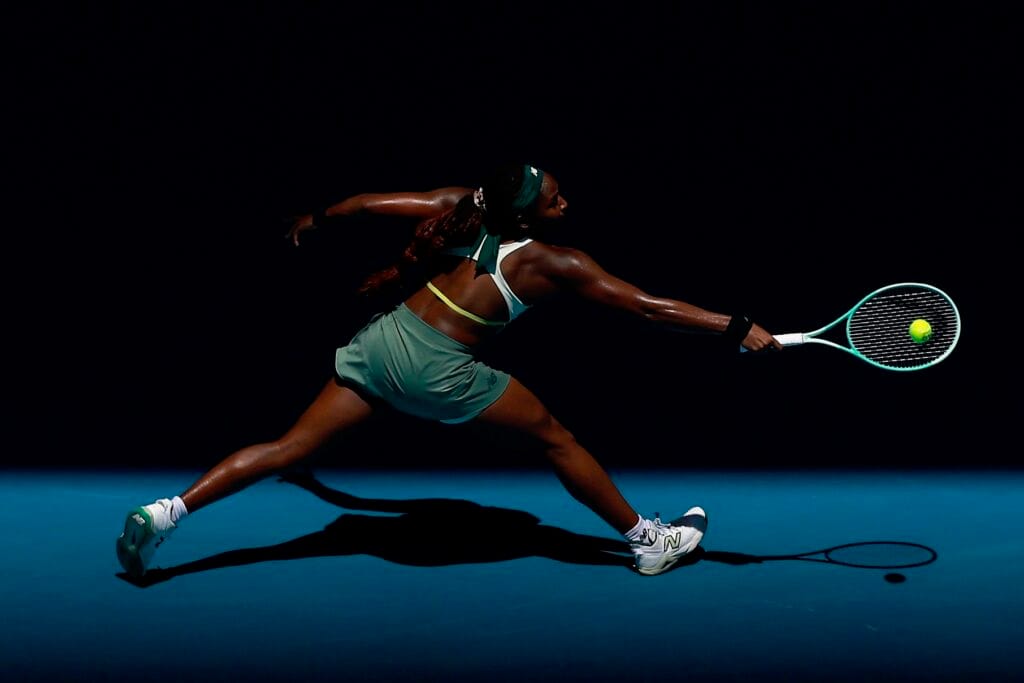Women Athletes Are Out-Earning Men in 2025 — But Only in These Sports
In a few key sports, women are now out-earning men and redefining the economics of athletics.

Success isn’t about breaking records; it’s about rewriting the rules.
This line resonates strongly today. In 2025, women athletes are not just closing the gender pay gap; they’re surpassing men in earnings across several high-profile sports. From tennis to gymnastics, from rising college stars to the global cricket stage, female athletes are becoming high earners. However, this success is not evenly distributed, and it has significant implications for the sports world.
Tennis: Top-Tier Pay in the Spotlight
Tennis has long been a leader in equal pay for women. Since Billie Jean King’s activism and the founding of the WTA in 1973, the sport has maintained equal prize money in the four Grand Slam tournaments.
In 2025, Coco Gauff sets the standard. At just 21 years old, she has earned over $22 million from Grand Slam prize money and endorsements (New Balance, Rolex, Barilla). According to Forbes, her earnings exceed nearly all male tennis players.
Her consistent performance, such as impressive runs at the Australian Open and Miami Open, along with her global brand, has made her one of the highest-paid athletes in the world. Tennis has the framework: equal prize pools and opportunities for personal branding.
Gymnastics: The Multi-Million-Dollar Comeback
Simone Biles isn’t just a multi-time Olympic champion; she’s a cultural icon. Her 2025 comeback was more than about competing; it was about building a business. Biles transformed her platform into a multi-million-dollar brand, forming partnerships with Athleta, Uber Eats, and a wellness line that reflects her mental health advocacy.
In a sport with limited opportunities for exposure, she became the top-earning gymnast in the world. Her journey shows that emotional connection and cultural significance can produce greater financial success than traditional league structures.
NIL Revolution: College Women Cashing In
The NIL (Name, Image, and Likeness) revolution has changed college sports dramatically, and female athletes are reaping the rewards.
Livvy Dunne (Gymnastics): LSU gymnast Livvy Dunne is among the first NIL millionaires, valued at over $4.1 million. Her partnerships include American Eagle, Vuori, Bodyarmor, and Invisalign, supported by over 8 million TikTok followers and 5 million on Instagram.
Flau’jae Johnson (Basketball): LSU basketball player Flau’jae Johnson has an NIL valuation near $1.5 million, with endorsements from Puma, Meta, JBL, Taco Bell, and a record deal with Roc Nation. Her dual involvement in music and sports continues to strengthen her brand.
Beyond LSU, athletes like Paige Bueckers are reaching similar milestones, earning between $1 and $4 million annually from NIL deals. This trend highlights that influence combined with performance leads to substantial earnings.
Cricket: Smriti Mandhana Breaks Ground
In cricket, traditionally a male-dominated sport, Smriti Mandhana is changing the narrative.
As a star in the Women’s Premier League (WPL), her total earnings from contracts, league pay, and endorsements now rival those of top domestic male players, though they still fall short of IPL stars.
Recently, India’s BCCI announced equal match fees for women internationally, a development unthinkable a decade ago.
Mandhana’s rising brand shows the commercial potential of women’s cricket while also pointing out existing structural inequalities.
Bigger Picture: Early Momentum, but Wider Gaps
Uneven Landscape:
Basketball: Average WNBA pay (~$76,000 for first-year players, $215,000 at maximum) is a fraction of NBA rookie pay ($12 million).
Soccer: NWSL salaries ($35,000 on average) remain significantly lower than MLS ($410,000).
Golf: LPGA’s top earners ($320,000) are vastly outpaced by PGA players ($2 million).
Without equal revenue structures or broadcast deals, these gaps persist.
Revenue Growth:
Nevertheless, women’s sports revenue is on the rise.
Global revenue for women’s elite sports reached $1.3 billion in 2024, driven by events like the Women’s World Cup.
Yet, female athletes still earn only about 1% of what men earn on average.
Structural Shifts: Funding & Policy
Significant policy changes are emerging.
The NCAA's $2.8 billion athlete settlement seeks to allocate NIL-related funds, but eight women athletes have appealed, arguing that the current distribution favors men’s basketball and football, violating Title IX.
The new NCAA revenue-sharing model, set to take effect in July 2025, may allow transfers of up to $20.5 million per school directly to athletes.
Institutions like the University of Texas are using their sports income to support female athletes, especially in NIL-heavy sports like softball.
These changes could reshape funding for college women athletes.
Cultural & Economic Commentary
This moment in sports reflects broader societal trends.
Digital-first era: Personal branding on social platforms empowers athletes beyond traditional media.
Cultural value: Brands invest more when athletes tell meaningful stories about mental health, activism, and authenticity.
Changing gender dynamics: Caitlin Clark’s WNBA, Simone Biles’ wellness work, and NCAA settlements show a shift toward female empowerment, not just fairness. Audiences are increasingly rewarding substance over mere visibility.
Are We Closing the Gap—or Merely Redefining the Edges?
The rise of women athletes in earnings—from Coco Gauff’s court success to Simone Biles’ brand and NIL stars like Livvy Dunne—is nothing short of revolutionary. These stories mark real progress. But we should not confuse momentum with resolution.
The top earners are finally getting their recognition, but thousands of equally talented women still face systemic challenges, including low league funding, lack of media representation, and significant pay disparities.
We’re not merely closing the gap; we’re reshaping what that gap looks like.
So the question isn’t only: Are we closing it?
It’s: Will we continue to push until equality is the norm, not the exception?
What do you think? Are these victories signs of lasting change or just the beginning of a much longer journey?




